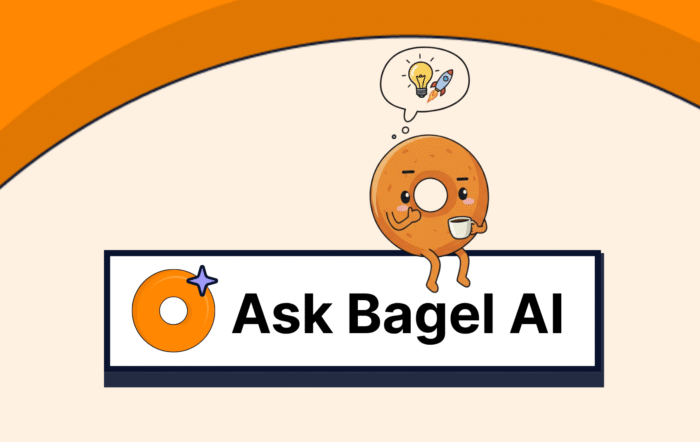Product Managers and Go-To-Market (GTM) teams work best when they’re aligned, it makes growing the business and keeping customers happy much easier. But let’s be honest, deciphering the language of Sales, Customer Success (CS), Support, and Marketing can sometimes feel like learning a whole new dialect.
This guide is here to help! We’re breaking down the most important GTM terms and metrics so you can confidently navigate cross-functional conversations and make smarter product decisions, complete with sharp, real-life examples that show how these concepts work in practice.
Sales Terms and Metrics
- Monthly Recurring Revenue (MRR)
Definition: The predictable total revenue generated from all active subscriptions in a particular month.
Why It Matters for Product Managers: MRR helps Product Managers track revenue trends and the impact of pricing strategies.
Example: If 1,000 users subscribe to a $50/month plan, MRR is $50,000.
How Product Managers Can Use It: Monitor how feature releases or promotions impact revenue growth.
- Annual Recurring Revenue (ARR)
Definition: The total recurring revenue a company expects from customers in a year.
Why It Matters for Product Managers: ARR helps Product Managers understand the revenue impact of features and product improvements.
Example: A Product Manager at a subscription-based design tool releases a new AI-powered feature. If 500 customers upgrade to a $200/year premium plan, ARR increases by $100,000.
How Product Managers Can Use It: Identify features that drive premium conversions and influence pricing strategies.
- Customer Acquisition Cost (CAC)
Definition: The total cost of acquiring a new customer, including marketing and sales expenses.
Why It Matters for Product Managers: Lowering CAC through product-led growth strategies can drive efficiency.
Example: If a company spends $50,000 on marketing and sales to acquire 500 new customers, CAC is $100 per customer.
How Product Managers Can Use It: Build features that increase organic adoption, reducing dependency on paid acquisition.
- Sales Cycle Length
Definition: The average time taken to close a deal.
Why It Matters for Product Managers: Long sales cycles may signal friction points that the product can help eliminate.
Example: A SaaS tool reduces required demos, shortening the sales cycle from 60 to 40 days.
How Product Managers Can Use It: Improve UX and automation to speed up decision-making.
- Win Rate
Definition: The percentage of sales opportunities that result in a closed deal.
Why It Matters for Product Managers: A low win rate may suggest that product gaps are blocking deals.
Example: If a sales team closes 25 deals out of 100 opportunities, the win rate is 25%.
How Product Managers Can Use It: Address customer objections and improve feature gaps.
Turn GTM Metrics Into Product Impact
See how Bagel AI connects GTM signals directly to your roadmap. Book a demo to see it in action.
Customer Success and Support Metrics
- Net Revenue Retention (NRR)
Definition: A measure of revenue retained from existing customers over a specific period, including upgrades, downgrades, and churn.
Why It Matters for Product Managers: NRR highlights how well a product drives expansion revenue and offsets churn.
Example: If a company starts with $1M ARR from existing customers, gains $300K from expansions, and loses $100K from churn, NRR is 120%.
How Product Managers Can Use It: Focus on features that encourage upgrades, reduce downgrades, and improve retention.
- Customer Lifetime Value (CLV/LTV)
Definition: The total revenue a business can expect from a single customer throughout the business relationship.
Why It Matters for Product Managers: CLV helps Product Managers understand the long-term value of customers and justify retention efforts.
Example: If a customer pays $50/month and stays for 24 months, LTV is $1,200.
How Product Managers Can Use It: Prioritize features that increase retention and upsell potential.
- Customer Satisfaction Score (CSAT)
Definition: A metric that measures how satisfied customers are with a product or service.
Why It Matters for Product Managers: High CSAT scores indicate strong product-market fit.
Example: A post-support survey asks customers to rate service on a scale of 1-5. If 80% rate it 4 or 5, CSAT is 80%.
How Product Managers Can Use It: Improve areas where satisfaction is low, such as onboarding.
- Net Promoter Score (NPS)
Definition: Measures customer loyalty and likelihood of recommending a product.
Why It Matters for Product Managers: A high NPS signals strong product adoption and brand advocacy.
Example: A survey asks customers how likely they are to recommend the product on a scale of 0-10. If promoters (9-10) outnumber detractors (0-6), NPS is high.
How Product Managers Can Use It: Identify what makes promoters happy and address detractors’ concerns.
- Customer Retention Rate
Definition: The percentage of customers who continue using the product over time.
Why It Matters for Product Managers: High retention means users see ongoing value.
Example: If a company starts with 1,000 customers and retains 850 after a year, retention is 85%.
How Product Managers Can Use It: Focus on engagement features that keep users returning.
- Customer Churn Rate
Definition: The rate at which customers stop using the product.
Why It Matters for Product Managers: A high churn rate indicates dissatisfaction or lack of product fit.
Example: If 50 out of 1,000 customers cancel subscriptions in a month, churn is 5%.
How Product Managers Can Use It: Address key churn reasons through UX improvements and retention strategies.
Marketing and Financial Metrics
- Conversion Rate (CVR)
Definition: The percentage of users who take a desired action, such as making a purchase or signing up.
Why It Matters for Product Managers: Helps measure the effectiveness of product experiences.
Example: If 500 out of 10,000 users sign up for a trial, CVR is 5%.
How Product Managers Can Use It: Optimize onboarding and signup flow to increase conversion.
- Cost Per Acquisition (CPA)
Definition: The cost of acquiring a new potential customer through marketing.
Why It Matters for Product Managers: Lower CPA indicates efficient marketing spend.
Example: If a marketing campaign costs $10,000 and brings in 2,000 new users, CPA is $5.
How Product Managers Can Use It: Improve product virality and referral strategies to reduce acquisition costs.
- Burn Rate
Definition: The rate at which a company is losing money.
Why It Matters for Product Managers: Helps assess sustainability of product investments.
Example: A startup spending $100,000 monthly with $50,000 in revenue has a burn rate of $50,000.
How Product Managers Can Use It: Align product development with financial sustainability.
How Bagel AI Helps Product Managers with GTM Metrics
A Product Intelligence Platform like Bagel enables Product Managers to:
- Tie product impact to revenue. Instead of guessing which features drive ARR, Product Managers can see real-time insights into usage and conversion.
- Prioritize based on business value. By linking roadmap decisions to customer retention and expansion data, Product Managers can push impactful updates.
- Optimize GTM collaboration. Sales and CS teams can surface product blockers, ensuring Product Managers work on the highest-value improvements.
Understanding GTM metrics ensures that product decisions contribute to revenue, customer success, and market positioning. By integrating these insights, Product Managers like you can collaborate more effectively with GTM teams and drive strategic, data-backed product development.
Stay aligned, stay data-driven, and build products that truly move the needle.



